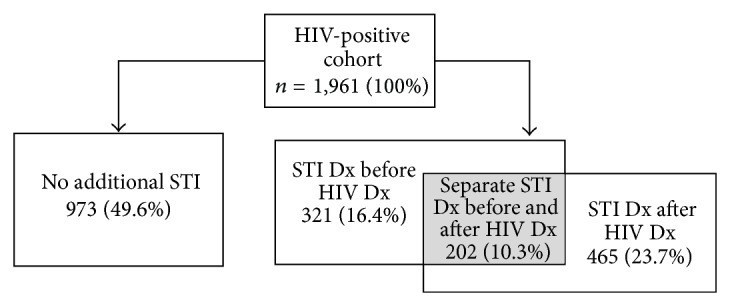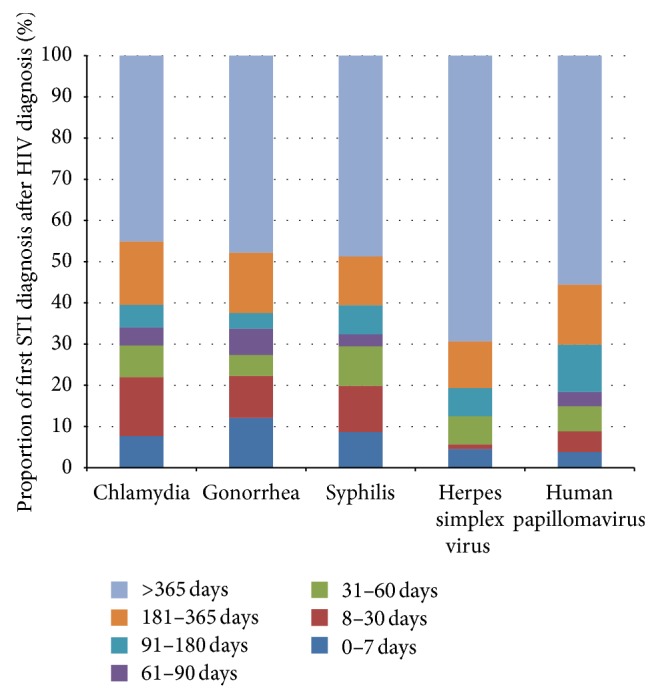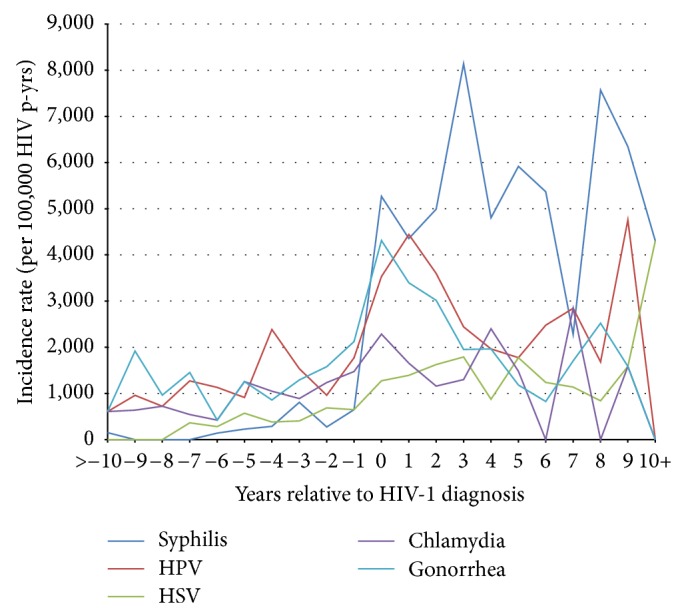Epidemiology of Sexually Transmitted Infections among Human Immunodeficiency Virus Positive United States Military Personnel.
Journal of sexually transmitted diseases
Pub Date : 2013-01-01
Epub Date: 2013-04-21
DOI:10.1155/2013/610258
引用次数: 8
Abstract
Background. Minimal data exist that describe the epidemiology of sexually transmitted infections (STI) in human immunodeficiency virus (HIV) positive populations across the pre- and post-diagnosis periods for HIV. Purpose. The purpose of this study was to identify and describe the epidemiology of gonorrhea, chlamydia, syphilis, herpes simplex virus, and human papillomavirus in an HIV-positive population. Methods. All 1,961 HIV seropositive United States active duty military personnel from 2000–2010 were identified. STI diagnoses relative to HIV diagnosis from 1995, which was the earliest electronic medical record available, to 2010 were examined. Results. The incidence diagnosis rates of STI generally increased during the period leading up to eventual HIV diagnosis. The rates of STI during the post-HIV diagnosis period fluctuated, but remained elevated compared to pre-HIV diagnosis period. Approximately 45%–69% with an STI in the HIV seropositive military population were diagnosed with their first STI greater than one year after their HIV diagnosis. Of those who were diagnosed with an STI in the post-HIV diagnosis period, 70.6% had one STI diagnosis, 23.5% had two STI diagnoses, and 5.8% had three or more STI diagnoses. Conclusions. Despite aggressive counseling, high-risk sexual behavior continues to occur in the HIV-positive military population.



人类免疫缺陷病毒阳性的美国军事人员中性传播感染的流行病学。
背景。现有的关于人类免疫缺陷病毒(HIV)阳性人群在HIV诊断前后的性传播感染(STI)流行病学的数据很少。目的。本研究的目的是确定和描述淋病、衣原体、梅毒、单纯疱疹病毒和人乳头瘤病毒在hiv阳性人群中的流行病学。方法。从2000年到2010年,所有1961名HIV血清阳性的美国现役军人都被确定。从1995年(可获得的最早的电子医疗记录)到2010年,对与艾滋病毒诊断相关的性传播感染诊断进行了检查。结果。在最终诊断为艾滋病毒之前,性传播感染的发生率诊断率普遍增加。在艾滋病毒诊断后的时期,性传播感染的比率有所波动,但与艾滋病毒诊断前的时期相比仍然较高。在艾滋病毒血清阳性的军队人群中,约有45%-69%的性传播感染患者在艾滋病诊断后一年以上被诊断为首次性传播感染。在艾滋病后诊断期间被诊断为性传播感染的人中,70.6%曾被诊断为一次性传播感染,23.5%曾被诊断为两次性传播感染,5.8%曾被诊断为三次或三次以上。结论。尽管积极的咨询,高危性行为继续发生在艾滋病毒阳性的军队人口。
本文章由计算机程序翻译,如有差异,请以英文原文为准。
求助全文
约1分钟内获得全文
求助全文

 求助内容:
求助内容: 应助结果提醒方式:
应助结果提醒方式:


